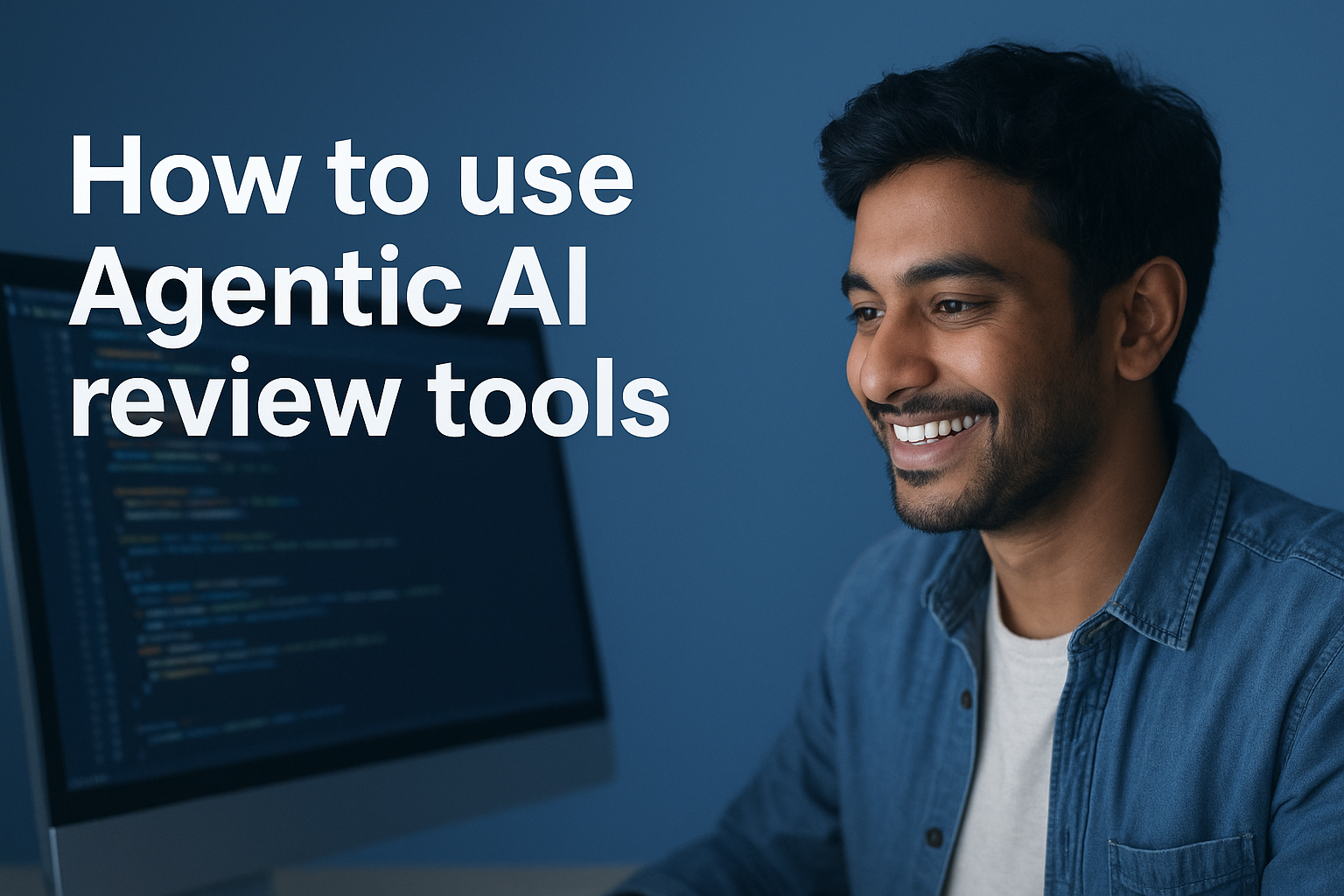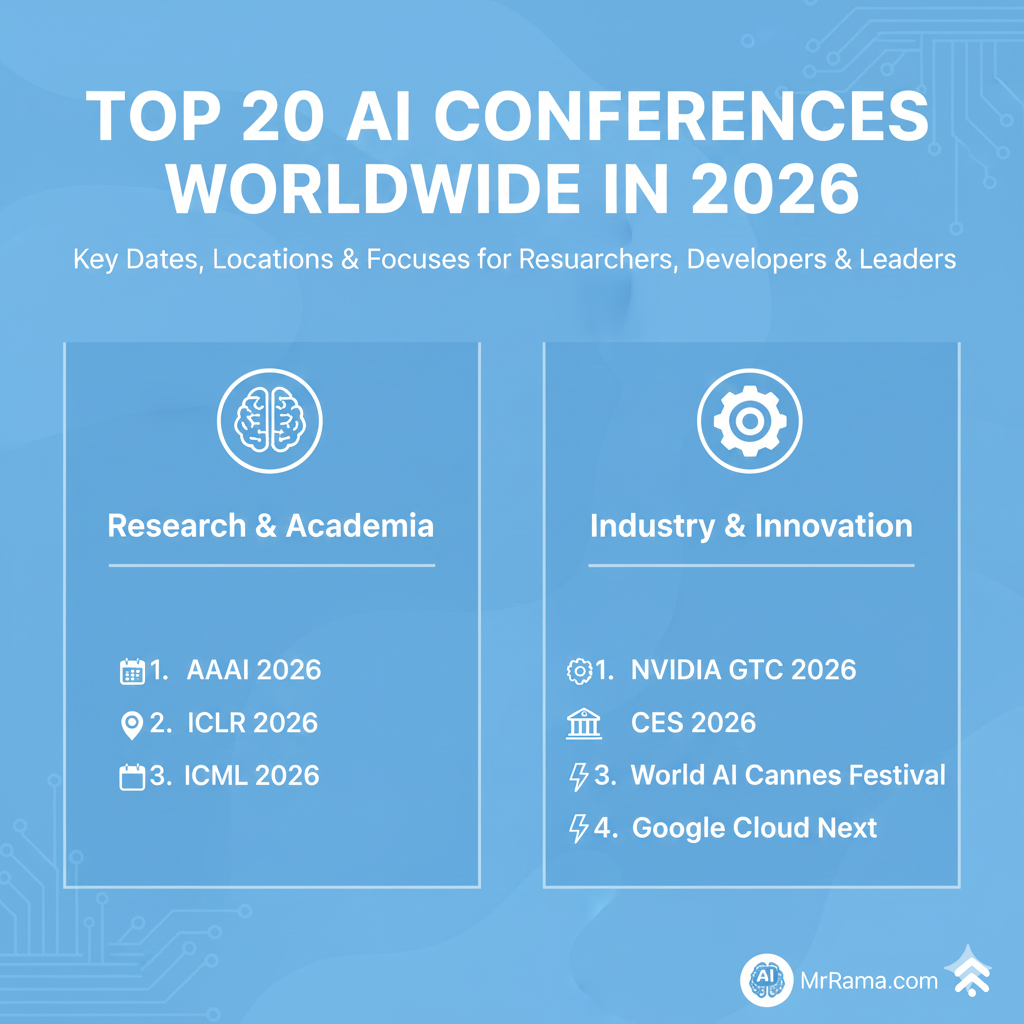Introduction
Code review has always been one of the most essential parts of software development. It’s where developers ensure code quality, maintainability, and security before pushing it to production.
However, as projects scale, manual code reviews can quickly become time-consuming and inconsistent.
That’s where Agentic AI Review Tools step in, bringing intelligence, precision, and automation into the process without losing the human touch.
Agentic AI isn’t just another coding AI assistant. It’s a class of AI systems designed to act independently, understand context, and make reasoned decisions about the quality of your code.
Unlike traditional static analysis tools, these systems adapt to your codebase, learn your team’s standards, and evolve with your workflow.
In this article, we’ll walk through what Agentic AI code review tools are, how they work, and how to integrate them effectively into your development pipeline. We’ll also cover practical examples, benefits, and best practices to help you get the most out of these next-generation assistants.
Understanding Agentic AI in Code Reviews
Before diving into tools and techniques, it’s important to understand what makes an AI “agentic.”
An agentic AI is capable of acting autonomously toward a goal. Instead of waiting for specific commands, it can take initiative, for instance, identifying a code vulnerability and suggesting a fix based on project context.
In code reviews, this means the AI doesn’t just highlight syntax errors or unused imports; it can:
- Detect logic flaws or inefficiencies.
- Understand your architecture and coding style.
- Recommend improvements aligned with your best practices.
- Learn from past review decisions to make better future suggestions.
Traditional AI models focus on pattern recognition; agentic systems go further, they “reason” about what’s best for the code. They mimic how senior developers think when reviewing pull requests: by considering both technical correctness and design intent.
When applied to large-scale projects, these intelligent agents can serve as tireless collaborators, constantly learning from your team and improving their own understanding of your repository.
How Agentic AI Review Tools Work (Step-by-Step Overview)
Agentic AI systems are designed to behave more like intelligent teammates than static programs. They analyse, reason, and act all while learning from their environment. When applied to code review, their workflow typically follows a multi-layered approach:
1. Code Ingestion and Contextual Learning
The first step begins when the Agentic AI connects to your code repository (e.g., GitHub, GitLab, or Bitbucket). It scans your project files, dependencies, and historical commits to understand your architecture and coding conventions.
Unlike traditional tools that only check syntax, these AI agents contextualise your entire codebase. They identify patterns such as naming conventions, common bugs, and reusable functions.
This contextual foundation allows them to give feedback that fits your code style rather than generic recommendations.
2. Static and Semantic Analysis
Once the AI has learned your environment, it performs a static and semantic review.
- Static analysis checks the structure of the code syntax, indentation, imports, and type consistency.
- Semantic analysis goes deeper, evaluating logic flow, data relationships, and potential runtime errors.
Agentic AI models use large code datasets to predict likely issues or improvements. For instance, they can identify potential null reference exceptions, security vulnerabilities, or redundant computations before the code even runs.
3. Intelligent Reasoning and Suggestions
Here’s where the “agentic” behaviour truly shines.
Instead of flagging a long list of problems, the AI prioritises what matters most. It might say:
“This function violates the project’s async handling rule. Suggest refactoring using Promise.all for parallel execution.”
The tool doesn’t just spot the issue, it offers a fix that aligns with your project’s architecture. Over time, as your team accepts or rejects its recommendations, it fine-tunes future feedback to match your preferences.
4. Integrating with Pull Requests
Agentic AI review tools can be embedded directly into your CI/CD pipeline. When a developer opens a pull request, the AI automatically reviews the code and posts structured comments, similar to a human reviewer.
For example, in GitHub, it might add:
“Line 74: Potential inefficiency detected in database query. Consider using prepared statements for faster execution.”
This approach helps developers catch issues early, saving time and avoiding bottlenecks during manual reviews.
5. Continuous Feedback Loop and Learning
One of the most powerful aspects of these tools is their ability to learn continuously.
Every time your team interacts with the AI, whether you approve or reject a suggestion, it adapts. It remembers your decisions and aligns future reviews with your coding philosophy.
This ongoing cycle of review, feedback, and refinement creates an AI that truly becomes part of your development culture.
Example in Practice
Let’s consider a mid-sized development team working on a web application. They integrate an Agentic AI Review Tool into their GitHub repository.
- The AI scans the existing project and identifies recurring patterns of inefficient data fetching in the backend.
- During each new pull request, it automatically highlights these issues and recommends optimised code snippets.
- Over time, the team notices that repetitive mistakes disappear, and review cycles are cut by nearly 40%.
In short, the AI acts as a silent mentor always present, always improving.
Key Benefits of Using Agentic AI Review Tools
Modern development teams face constant pressure to deliver faster without compromising quality. That’s where Agentic AI Review Tools make a difference; they bridge the gap between speed and accuracy.
By automating parts of the review process while learning from human judgment, these tools deliver consistent improvements that benefit both developers and businesses.
Here’s how they help:
1. Faster Code Reviews, Shorter Release Cycles
Manual code reviews can take hours, especially for large projects with multiple contributors. Agentic AI systems accelerate this by instantly identifying common issues and providing structured suggestions.
For example, instead of waiting for senior developers to approve changes, AI can handle the initial round of reviews, flagging performance bottlenecks, syntax inconsistencies, or code duplication. Developers then focus only on high-level feedback, dramatically shortening release cycles.
In agile environments, this can mean the difference between shipping weekly versus monthly.
2. Consistent Quality Across the Team
Different developers have different coding styles, which can lead to inconsistent codebases. Agentic AI tools bring standardisation by learning your organisation’s preferred patterns and applying them uniformly.
They remember past review decisions and enforce those standards in new submissions acting like a tireless gatekeeper for code consistency.
Over time, your entire team begins to write cleaner, more predictable code simply because the AI reinforces best practices automatically.
3. Reduced Human Error and Bias
Even the best reviewers can overlook issues after long hours of work. AI doesn’t fatigue, lose focus, or show favouritism. It reviews every pull request objectively, ensuring no critical bugs slip through due to oversight or bias.
Moreover, the AI flags potential vulnerabilities (like unsafe API calls or weak encryption) that developers might not catch immediately. This reduces production-level defects and improves overall product stability.
4. Empowering Junior Developers
Agentic AI Review Tools act as real-time mentors. Instead of waiting for feedback from senior teammates, junior developers get instant guidance and explanations for each suggestion.
For instance, if the AI detects inefficient loop handling, it won’t just mark it as an error it will explain why it’s inefficient and propose a better approach. This accelerates learning and helps new developers write production-grade code faster.
5. Enhanced Security and Compliance
Security often becomes an afterthought during fast-paced sprints. AI review tools integrate security checks directly into the development workflow.
They can automatically detect:
- Hardcoded credentials or tokens.
- Outdated or vulnerable libraries.
- Data handling inconsistencies that could lead to leaks.
For organisations handling sensitive data, this proactive monitoring is invaluable. It ensures compliance with standards like ISO 27001 or GDPR without adding manual overhead.
6. Better Collaboration Between Humans and Machines
The beauty of Agentic AI lies in its collaborative design. It doesn’t replace human reviewers — it complements them.
While AI handles repetitive checks, human developers focus on creative problem-solving, architectural decisions, and user-centric features. The result is a well-balanced workflow where every team member contributes, and they add the most value.
7. Continuous Improvement Over Time
Unlike static tools that deliver the same output repeatedly, agentic systems evolve. They learn from every project, review, and correction.
The longer you use them, the smarter they become. Over months, you’ll notice fewer recurring mistakes, improved developer efficiency, and a noticeable rise in code quality.
8. Cost Efficiency at Scale
For large teams, the cost of time spent in reviews adds up quickly. Automating the repetitive 60–70% of that process translates into direct cost savings.
Organisations report that using Agentic AI Review Tools can cut review time by up to half, allowing developers to dedicate more time to innovation and new feature development.
How to Integrate Agentic AI Review Tools into Your Workflow
Bringing an Agentic AI Review Tool into your development process doesn’t mean overhauling everything you already have. The goal is smooth integration aligning AI automation with your team’s existing systems, coding style, and workflow.
Here’s a step-by-step breakdown of how to get started:
1. Assess Your Current Development Workflow
Before introducing AI tools, evaluate your team’s existing process:
- How are code reviews handled today?
- What tools are you already using (GitHub, GitLab, Jenkins, Bitbucket, etc.)?
- Which parts of the review cycle are repetitive or prone to delay?
This assessment will help identify where AI can have the most impact, whether that’s code quality checks, security reviews, or documentation consistency.
2. Choose the Right Agentic AI Review Tool
There are several emerging tools in this space, each with unique capabilities. When evaluating options, look for the following:
- Contextual Learning: The AI should adapt to your project’s coding standards.
- Integration Compatibility: Ensure it connects smoothly with your repository and CI/CD pipeline.
- Custom Rule Support: The best tools let you define your own review criteria.
- Explainable Suggestions: Choose tools that not only flag issues but also explain why they matter.
Some popular platforms experimenting with Agentic AI for code review include CodiumAI, CodeRabbit, Sweep.dev, and Aider. While not all are purely agentic yet, they’re moving toward autonomous review capabilities.
3. Integrate with Your Repository and CI/CD
Most Agentic AI Review Tools offer plugins or APIs to integrate directly into platforms like GitHub Actions, GitLab CI, or Bitbucket Pipelines.
Once connected, the AI can automatically review every pull request before it’s merged. For example:
- When a developer pushes new code, the AI scans the changes.
- It posts review comments directly in the PR thread.
- Developers address or dismiss suggestions with one click.
This creates a continuous, frictionless loop of review and improvement.
4. Train the AI with Your Codebase and Style Guides
Agentic AI tools become smarter when they understand your specific environment. Upload your team’s:
- Coding guidelines or style documents.
- Historical review decisions (accepted/rejected comments).
- Key architectural documents or readmes.
The AI uses this context to fine-tune its review strategy, ensuring feedback that fits your unique standards rather than generic templates.
Over time, as the system observes your team’s interactions, it will start mirroring your preferences automatically.
5. Establish Feedback Cycles Between Humans and AI
For the best results, treat the AI as a collaborator, not a replacement. Encourage developers to:
- Review the AI’s comments critically.
- Accept valid suggestions and flag irrelevant ones.
- Share insights with the team when the AI finds something unexpected.
These human–AI feedback loops help the model evolve faster while maintaining human oversight.
6. Monitor and Measure Performance
Once deployed, track how the AI impacts your workflow using metrics such as:
- Time spent per code review before and after AI integration.
- Number of issues detected early vs. post-release.
- Reduction in repetitive review comments.
These indicators help quantify the return on investment and identify areas for fine-tuning the tool’s behavior.
7. Scale Gradually Across Teams
Start small — perhaps with a single project or feature team. Once you confirm that the AI adds value without disruption, roll it out to other repositories.
Larger teams may even create custom internal AI agents trained specifically on their codebase, offering even more accuracy and alignment with company standards.
8. Keep Human Oversight in the Loop
Even the smartest AI systems aren’t infallible. Always maintain human reviewers for final approval, especially for critical modules involving business logic or security.
Think of Agentic AI as your first reviewer — one that never sleeps, never skips a check, and gets smarter with every review.
9. Ensure Security and Data Privacy
When using any AI integrated into your codebase, make sure it adheres to strict security protocols. Opt for tools that:
- Run locally or within a private cloud.
- Don’t send proprietary code to external servers.
- Offer transparent data handling and encryption policies.
This ensures your intellectual property stays safe while leveraging AI-driven productivity.
Real-World Applications of Agentic AI in Code Reviews
The true power of Agentic AI Review Tools becomes evident when you see them in action. Across different industries from startups to large-scale enterprises these intelligent agents are helping teams write cleaner, more reliable, and secure code. Below are some practical scenarios where these tools make a real impact.
1. Streamlining Pull Request Reviews in Agile Teams
In a fast-paced agile setup, developers commit and merge code multiple times a day. Reviewing every single change manually can be exhausting.
Agentic AI tools can automatically step in to handle initial reviews. When a pull request is created, the AI:
- Scans the modified files.
- Flags logical or stylistic issues.
- Adds inline suggestions directly in the PR comments.
The human reviewer then focuses only on architectural or feature-level concerns. This reduces turnaround time drastically sometimes from hours to minutes while ensuring that no small detail goes unchecked.
Example:
A fintech startup integrated an Agentic AI review tool with GitHub Actions. Their developers reported that initial PR feedback was available within 90 seconds of each commit. The result: a 45% reduction in total review time and more consistent code across sprints.
2. Improving Security in Enterprise Applications
Enterprises deal with massive codebases where hidden vulnerabilities can cause serious damage. Agentic AI tools can perform continuous audits that complement human security experts.
For instance, they automatically:
- Detect hardcoded API keys or credentials.
- Flag outdated or vulnerable dependencies.
- Recommend code-level security improvements like input sanitization or encryption handling.
A global SaaS company used AI-based code review agents to scan legacy modules weekly. Within the first two months, they uncovered dozens of unpatched vulnerabilities that traditional static tools had missed all without interrupting daily development.
3. Automating Compliance Checks
Certain industries, such as healthcare, finance, or government, have strict coding and data-handling standards. Maintaining compliance manually is both time-consuming and prone to error.
Agentic AI Review Tools can automatically enforce these rules. For example:
- Checking if encryption libraries meet HIPAA or PCI-DSS standards.
- Ensuring that PII (personally identifiable information) is anonymized correctly.
- Verifying audit log requirements.
When developers submit code that violates compliance rules, the AI flags the issue and offers compliant alternatives. This keeps projects secure and regulation-ready at all times.
4. Mentoring and Upskilling Developers
Agentic AI isn’t just a productivity booster — it’s also an educator. For junior developers, every AI-generated review comment is a micro-learning moment.
Scenario:
A small software agency introduced AI-assisted reviews for their new hires. Over six months, code review rejections dropped by 30%, and junior devs started writing cleaner code independently. The AI effectively served as an always-available mentor, reinforcing company coding standards.
5. Continuous Integration and DevOps Enhancement
Modern DevOps relies heavily on automation, and Agentic AI fits right in. By integrating AI review tools into CI/CD pipelines, teams ensure that only high-quality code progresses through each stage.
Imagine this workflow:
- Developer pushes code → AI performs review.
- AI flags issues → Developer fixes them.
- Code passes automated tests → CI/CD deploys automatically.
This “AI gatekeeping” model keeps deployment pipelines healthy and ensures that problematic commits never reach production.
6. Large Language Model (LLM) Fine-Tuning for Code Quality
Some advanced organizations are going a step further — training their own internal AI agents using past review data. These custom Agentic AI Review Tools learn not only from codebases but also from the company’s unique technical culture.
For example:
- A game development studio fine-tuned an agent on years of Unity and Unreal Engine commits.
- The AI learned team-specific naming patterns and engine optimizations.
- It began suggesting improvements that even experienced devs found insightful.
By creating their own private AI reviewers, companies combine the intelligence of machine learning with the wisdom of their best developers.
7. Open-Source Collaboration and Community Contributions
In open-source projects, maintaining quality across global contributors can be challenging. Agentic AI tools ensure every contribution meets a minimum quality standard before maintainers even see it.
This reduces the review burden and encourages faster, more inclusive collaboration. Open-source maintainers have reported that AI pre-reviews reduce manual work by up to 60%, allowing them to focus on strategic decisions instead of code clean-up.
8. Predictive Maintenance and Legacy Code Modernisation
When dealing with legacy systems, finding outdated functions or risky dependencies is difficult. Agentic AI Review Tools can proactively identify code areas that may need modernisation.
They highlight modules with frequent errors or technical debt indicators, allowing teams to plan refactoring efforts before issues turn critical.
For example, a logistics company used AI-powered code analysis to locate outdated APIs across its microservices. Within a quarter, they modernised 70% of legacy endpoints with minimal downtime.




